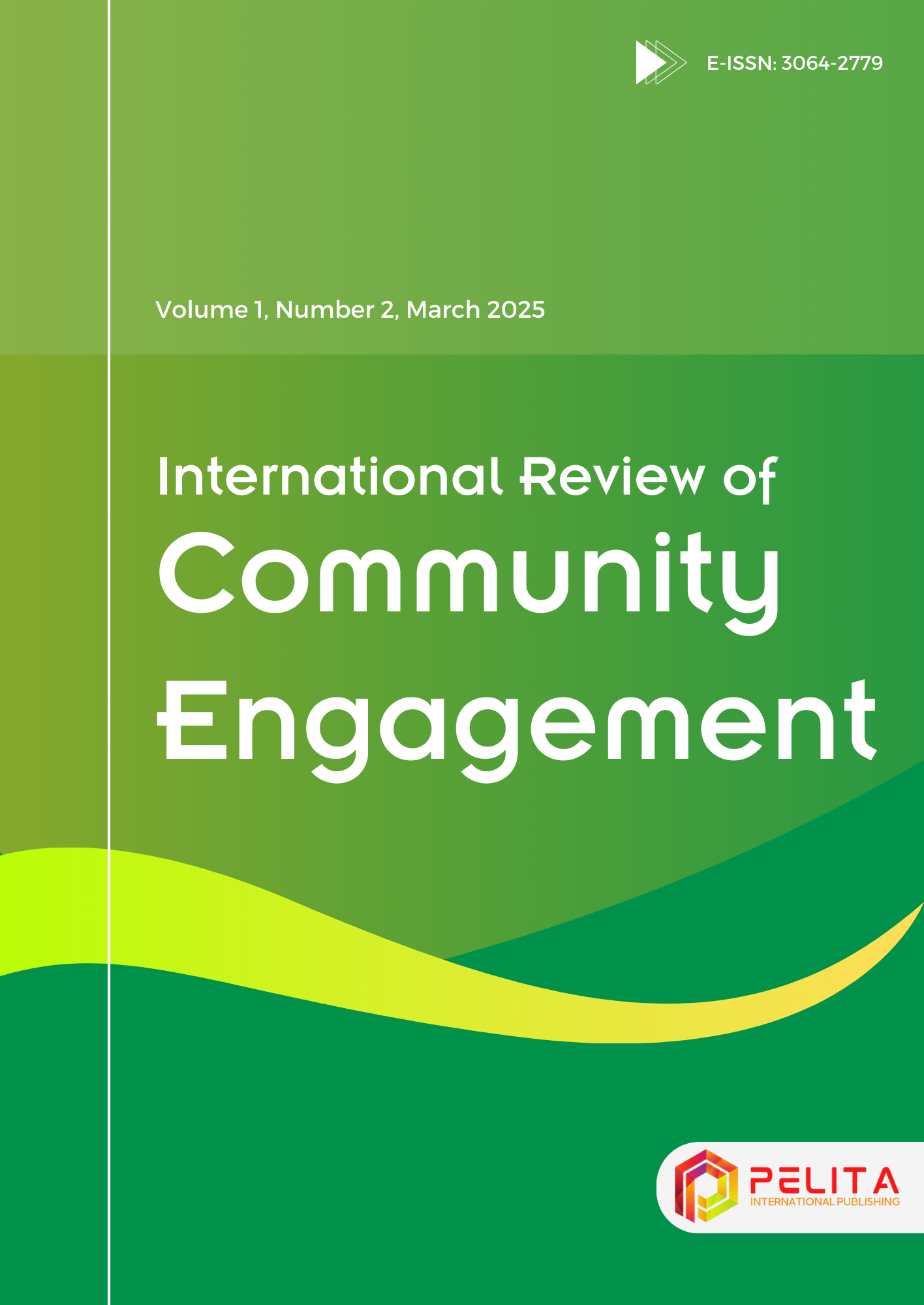Building awareness fisherman communities about the importance of marketing systems to reduce poverty
Main Article Content
Siti Nuraini
Dwitha Nirmala
Izzato Millati
The primary issue contributing to poverty in fishing communities is their relatively weak bargaining position in determining market prices. Additionally, intermediaries exert significant control, heavily influencing the pricing of fish commodities. This study aims to educate fishermen on effective marketing strategies to expand their market access, particularly focusing on fishing communities in Muncar District, Banyuwangi Regency. Using the Participatory Action Research (PAR) method, the study identifies challenges faced by fishermen and provides community-driven solutions. Initial findings revealed a strong socio-cultural dependency on intermediaries for marketing. Following interventions, including marketing training and product packaging workshops, the fishing community showed improved knowledge and practices, resulting in enhanced market accessibility. The intervention was effective in empowering fishermen to negotiate better prices and reduce their dependence on middleman.
Bartkus, V.O., Brooks, W., Kaboski, J.P., & Pelnik, C. (2022). Big fish in thin markets: Competing with the middlemen to increase market access in the Amazon. Journal of Development Economics, 155. https://doi.org/10.1016/j.jdeveco.2021.102757
BPS Banyuwangi Regency. (2022). Banyuwangi Regency in Figures 2022.
Bryman, A.B.E. (2011). Business Research Methods (3rd ed., Vol. 3rd). Oxford University Press.
Chau, N.H., Goto, H., & Kanbur, R. (2016). Middlemen, fair traders, and poverty. Journal of Economic Inequality, 14(1), 81–108. https://doi.org/10.1007/s10888-015-9314-2
Cresswell, J. W. (2013). Qualitative Inquiry and Research Design (L. Habib, Ed.; 3rd ed., Vol. 3rd). Sage.
Dothy;, Gurning, S., Baihaqi, I., & Agerista Sembiring, J. (2022). Mapping Maritime Logistics Collaborations in Fishing Industry: A Review of Literature. 3rd Asia Pacific International Conference on Industrial Engineering and Operations Management, 2278–2289.
Enayati, M., Arlikatti, S., & Ramesh, MV (2024). A qualitative analysis of rural fishermen: Potential for blockchain-enabled framework for livelihood sustainability. Heliyon, 10(2). https://doi.org/10.1016/j.heliyon.2024.e24358
Fassin, Y., Van Rossem, A., & Buelens, M. (2011). Small-Business Owner-Managers' Perceptions of Business Ethics and CSR-Related Concepts. Journal of Business Ethics, 98(3), 425–453. https://doi.org/10.1007/s10551-010-0586-y
Gómez, S., Patraca, B., & Molina, J. L. (2023). Improving seafood systems with social network analysis: The case of cuttlefish marketing in Catalonia. Marine Policy, 150. https://doi.org/10.1016/j.marpol.2023.105517
Haniffa, R., & Hudaib, M. (2006). Corporate governance structure and performance of Malaysian listed companies. Journal of Business Finance and Accounting, 33(7–8), 1034–1062. https://doi.org/10.1111/j.1468-5957.2006.00594.x
Issa, I.M., Munishi, E.J., Mubarack, K., & Mazana, M. (2022). Factor Impeding the Role of Intermediaries in UrbanFish and Fisheries Supply Chain; A Case of Dar Es Salaam, Tanzania. Social Sciences, Humanities and Education Journal (SHE Journal), 3(2), 222–241. https://doi.org/10.25273/she.v3i2
Mawardi, I., Widiastuti, T., Candika, Y. I. & Al Mustofa, M. U. (2022). Increasing the income of traditional fishermen through assistance in business management and marketing of processed fish products. Journal of Public Services, 6(2), 267–276. https://doi.org/10.20473/jlm.v6i2.2022.267-276
Mutiara, IR, Sumarti, T., & Satria, A. (2018). Rational Action and Networking Strategy of Small Fishermen Households. Sodality: Journal of Rural Sociology, 6(1), 32–39.
Ningrum, RA, Kinasih, KN, Asrin, DI, Ayu, AA, Sari, EDY, Kusuma, NM, Quamilla, JV, & Yuliani, MGA (2021). Implementation of the Socialization Program for Processing and Marketing of Freshwater Fish Products in an Effort to Increase Community Income for the Economy in Tapen Village, Tapen District, Bondowoso Regency. Journal of Public Services, 5(1), 158. https://doi.org/10.20473/jlm.v5i1.2021.158-166
Panjaitan, H., & Panjaitan, F. A. B. K (2020). The Economic Welfare of Fishermen Households in Indonesia. Psychology and Education, 57(8), 1–9. https://doi.org/10.17762/pae.v57i8.701
Pérez-Elizundia, G., Delgado-Guzmán, J. A., & Lampón, J. F. (2020). Commercial banking as a key factor for SMEs development in Mexico through factoring: A qualitative approach. European Research on Management and Business Economics, 26(3), 155–163. https://doi.org/10.1016/j.iedeen.2020.06.001
Rasni., Situmorang, L., & Rahman, A. (2022). Efforts of Fishermen in Sungai Nyamuk Village, Sebatik Timur District, Nunukan Regency to Improve Family Welfare. EJournal of Sosiatri-Sociology, 2022(4), 195–209.
Rosyidah, L., & Erlina, MD (2018). Fishery Business Development Strategy in Indragiri Hilir Regency, Riau Province. Economic and Social of Fisheries and Marine, 5(2), 116–128. https://doi.org/10.21776/ub.ecsofim.2018.005.02.01
Syahputra, R., & Mardhani, M. (2024). Community participation in mangrove conservation in the Buffer Zones of Langsa, Indonesia: A participatory approach. International Review of Community Engagement, 1(1), 6–10. https://doi.org/10.62941/irce.v1i1.54
Teske, T.D., Case, S.L., Lucas, D.L., Forrester, C.L., & Lincoln, J.M. (2022). Have you met Angus? Development and evaluation of a social marketing intervention to improve personal flotation device use in commercial fishing. Journal of Safety Research, 83, 260–268. https://doi.org/10.1016/j.jsr.2022.08.022
Trenggono, SW (2023). Quota-Based Measured Fishing for Sustainability of Fisheries Resources in Indonesia. Journal of Applied Marine and Fisheries (JKPT), 1(1). https://doi.org/10.15578/jkpt.v1i0.12057









